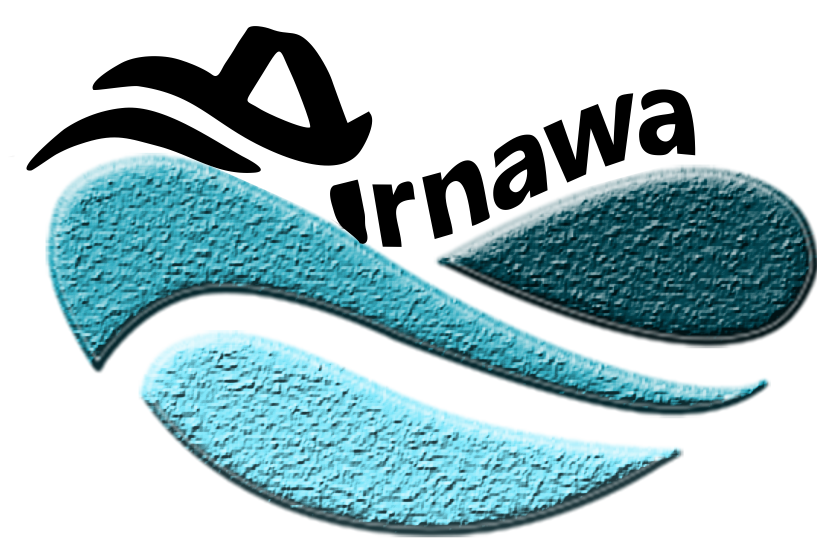ARNAWA applies the Creative Commons Attribution-NonCommercial-ShareAlike 4.0 International License, with the copyright on the published articles held by the journal. Authors are required to transmit the copyright to this journal once the articles are accepted. This journal is granted a non-exclusive license to publish the articles as the original publisher, along with the commercial right to publish printed issues for sale. Since this journal applies an open-access mode, authors may post articles published by this journal on personal websites or institutional repositories both prior to and after publication while providing bibliographic details that credit this journal.
By publishing with this journal, the copyright holder grants any third party the lawful right to use their published article to the extent provided by the Creative Commons Attribution-NonCommercial-ShareAlike 4.0 International license.
Subsequently, people are lawfully permitted to share, distribute, remix, adapt, and build upon the published articles for noncommercial purposes only, by providing appropriate credit or attribution (Title, Author, Source, and License of the work), including a link to the license, indicating if any changes were made, and redistribute the derivative outputs under the same license (CC BY-NC-SA 4.0).
Kesempatan Penelitian Ejaan Naskah di Era Digital: Uji Coba Pengamatan Perilaku Huruf Berdasarkan Metode Willem Van Der Molen
Corresponding Author(s) : Styan Lintang Sumiwi
Arnawa,
Vol 1 No 2 (2023): Edisi 2
Abstract
This paper draws on Peter Worsley's idea in 1972 to catalog errors and spelling conventions of a manuscript that would be useful in uncovering its copying tradition. The spelling aspect of the theory has never been fully implemented, including Worsley himself. Willem van der Molen (1983) attempted to implement spelling analysis by looking at the behavior of each script in each manuscript, but he only tried it with two letter variations. He couldn't complete the work due to the large amount of data involved, which took too long. Current advances in information technology have made it possible to automate text data processing that previously had to be done manually. This research reviews the method offered by Willem van der Molen and shows how computing technology helps in such analysis.
===
Tulisan ini berangkat dari gagasan Peter Worsley pada tahun 1972 untuk membuat katalog kesalahan dan konvensi ejaan suatu naskah yang berguna dalam mengungkap tradisi penyalinannya. Aspek ejaan dalam teori tersebut belum pernah diimplementasikan secara tuntas, termasuk oleh Worsley sendiri. Willem van der Molen (1983) mencontohkan implementasi analisis ejaan dengan cara memperhatikan perilaku setiap aksara pada setiap naskah, namun ia hanya mencobanya pada variasi dua huruf. Analisis tersebut tidak dapat ia selesaikan karena cakupan data yang besar sehingga memakan waktu terlalu lama. Kemajuan di bidang teknologi informasi yang ada saat ini telah memungkinkan otomatisasi pengolahan data teks yang sebelumnya harus dilakukan secara manual. Penelitian ini dilakukan sebagai tinjauan ulang atas metode yang ditawarkan Willem van der Molen dan memperlihatkan bagaimana teknologi komputasi bermanfaat dalam analisis tersebut.
Keywords
Download Citation
Endnote/Zotero/Mendeley (RIS)BibTeX
- Blake, N., & Thaisen, J. (2004). Spelling’s Significance for Textual Studies. Nordic Journal of English Studies, 3(1), 93. https://doi.org/10.35360/njes.24
- Caon, L. (2008). Authorial or scribal ? Spelling variation in the Hengwrt and Ellesmere manuscripts of The Canterbury tales. Lot.
- Creese, Helen. (1998). Pārthāyaṇa = The journeying of Pārtha: An eighteenth-century Balinese kakawin. KITLV Press.
- McIntosh, A., M.L. Samuels, Michael Benskin, Margaret Laing, & Keith Williamson. (1986). A linguistic atlas of late mediaeval English (Vol. 2). Aberdeen University Press.
- Robson, S. O. (1994). Prinsip-prinsip filologi Indonesia (Kentjanawati Gunawan, Penerj.). RUL.
- van der Molen, W. (1983). JAVAANSE TEKSTKRITIEK: EEN OVERZICHT EN EEN NIEUWE BENADERING GEÏLLUSTREERD AAN DE KUNJARAKARNA. Foris [Koninklijk Instituut voor Taal-, Land- en Volkenkunde].
- van der Molen, W. (2011). Kritik teks Jawa: Sebuah pemandangan umum dan pendekatan baru yang diterapkan kepada Kunjarakarna (1 ed.). Yayasan Pustaka Obor Indonesia.
- Wilkens, M. (2015). Digital Humanities and Its Application in the Study of Literature and Culture. Comparative Literature, 67(1), 11–20. https://doi.org/10.1215/00104124-2861911
- Worsley, P. J. (1972). Babad Bulelen: A Balinese Dynastic Genealogy. The Hauge : Martinus Nijhoff.
